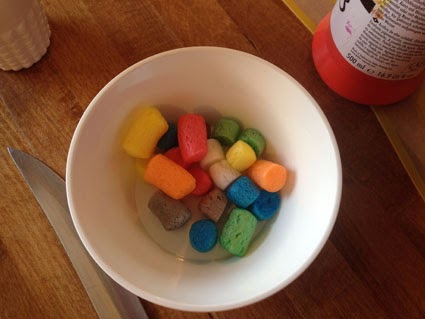Halfway through and full of caffeine-induced positivity, here's a few tips on how to survive inside - and ultimately crawl out of - the thesis hole.
1. Don't set yourself a daily word count.
Don't do it! The chirpy fresh me thought that was the best idea in the world. But on those days when it appears easier to squeeze blood from a stone than type 200 words on that screen, it's NOT a good idea. You will feel as though you are an absolute failure, even though literally no one cares about this except you (and possibly your supervisor if you're really lucky).
2. Do have an idea of how long each chapter is going to take.
While word targets are a bad idea, so is writing your discussion two days before hand-in. Chop in up into chapter-size chunks and that giant impossible book starts to become manageable.
3. Change up the scenery.
I write up between home and work. Home allows me to eat cereal whenever I want and wear pyjama shorts all day. Work allows me to talk to people other than my 85-year old neighbour. Whatever works for you.
4. Politely request that people stop asking you how it's going.
Three to four months is a long time for people to say "finished it yet?!". No. Seriously.
5. Have some fun.
It's true that there will always be something for you to do and you will constantly feel guilty for that hour you spend on Facebook/watching the Kardashians/drowning sorrows at the pub. But you will go insane without it! Take a day off, interact with human beings, have a laugh.
6. Pre-warn your friends and family that you might not be the best company.
This was a big one for me. Even when you're not writing, your head will be so full of crap you just wrote that your social skills may be *slightly* impaired. It's temporary - you'll be back to being the life and soul when this is all over.
7. OK some advice for the thesis itself...write the most amazing plan ever.
I'm not talking about a few bullet points, more like a few thousand words. Breakdown each chapter into headings, subheadings and then bullet points on the paragraphs. It's effort, but it'll be a lifesaver when your struggling (see point 1).
8. START EARLY!
Oh god I wish I'd started earlier. There are going to be holes in your work (unless you're perfect, congratulations and go somewhere else). While those holes can be explained easily enough, sometimes those couple of experiments (in those months I didn't leave spare) could tie together the loose pieces nicely. Just a thought.
9. STOP DOING EXPERIMENTS AND START WRITING!
While point 8 is true if you leave time, it's also true that that one last experiment that ties it all together and makes it all make sense ain't gonna happen. That experiment will always lead to another - that's like the rule of research. So put down the pipette and put those great ideas in your discussion (write them in your plan now!)
10. Last but not least: it's all temporary.
You will write it, someone will read it and then you'll get your PhD. It will happen. So remember that when you're at the bottom of the hole in your pyjama shorts talking to your 85-year old neighbour about the weather.
Just me?



























